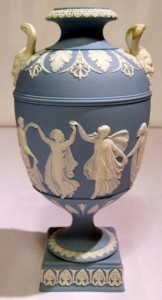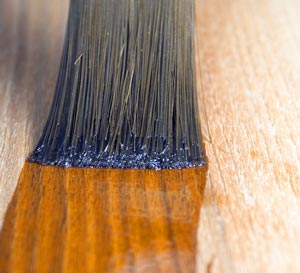Old Masters Artists Contribution to Art of Printmaking
Friday, October 5th, 2012“Old Master” is a term for a European painter of skill who worked before about 1800, or a painting by such an artist. An “old master print” is an original print (for example an engraving or etching) made by an artist in the same period likewise for an “old master drawing.” In theory an Old Master should be an artist who was fully trained, was a Master of his local artists’ guild, and worked independently, but in practice paintings considered to be produced by pupils or workshops will be included in the scope of the term. Therefore, beyond a certain level of competence, date rather than quality is the criterion for using the term.
Keep in mind, etching as referred in the Art Field developed from engraving on metal by goldsmiths and other metal-workers in order to decorate metal items such as guns, armour, cups and plates has been known in Europe since the Middle Ages at least, and may go back to antiquity. The elaborate decoration of armour, in Germany anyway, was an art probably imported from Italy around the end of the 15th century—little earlier than the birth of etching as a printmaking technique.
The earliest process as applied to printmaking is believed to have been invented by Daniel Hopfer (circa 1470–1536) of Augsburg, Germany. Hopfer was a craftsman who decorated armour in this way, and applied the method to printmaking, using iron plates (many of which still exist). Apart from his prints, there are two proven examples of his work on armour: a shield from 1536 now in the Real Armeria of Madrid and a sword in the Germanisches Nationalmuseum of Nuremberg. An Augsburg horse armour in the German Historical Museum, Berlin, dating to between 1512 and 1515, is decorated with motifs from Hopfer’s etchings and woodcuts, but this is no evidence that Hopfer himself worked on it, as his decorative prints were largely produced as patterns for other craftsmen in various media. The switch to copper plates was probably made in Italy, and thereafter etching soon came to challenge engraving as the most popular medium for artists in printmaking. Its great advantage was that, unlike engraving which requires special skill in metalworking, etching is relatively easy to learn for an artist trained in drawing.
Albrecht Dürer (21 May 1471 – 6 April 1528) was a German painter, print maker, engraver, mathematician, and theorist from Nuremberg. His prints established his reputation across Europe when he was still in his twenties, and he has been conventionally regarded as the greatest artist of the Northern Renaissance ever since. His vast body of work includes altarpieces and religious works, numerous portraits and self-portraits, and copper engravings. His woodcuts, such as the Apocalypse series (1498), retain a more Gothic flavor than the rest of his work. His well-known works include the Knight, Death, and the Devil (1513), Saint Jerome in his Study (1514) and Melencolia I (1514), which has been the subject of extensive analysis and interpretation. His watercolours mark him as one of the first European landscape artists, while his ambitious woodcuts revolutionized the potential of that medium.
Rembrandt Harmenszoon van Rijn, (15 July 1606 – 4 October 1669) was a Dutch painter and etcher. He is generally considered one of the greatest painters and printmakers in European art history and the most important in Dutch history. His contributions to art came in a period of great wealth and cultural achievement that historians call the Dutch Golden Age when Dutch Golden Age painting, although in many ways antithetical to the Baroque style that dominated Europe, was extremely prolific and innovative.
Having achieved youthful success as a portrait painter, Rembrandt’s later years were marked by personal tragedy and financial hardships. Yet his etchings and paintings were popular throughout his lifetime, his reputation as an artist remained high, and for twenty years he taught many important Dutch painters. Rembrandt’s greatest creative triumphs are exemplified especially in his portraits of his contemporaries, self-portraits and illustrations of scenes from the Bible. His self-portraits form a unique and intimate biography, in which the artist surveyed himself without vanity and with the utmost sincerity.
It was the innovations of Jacques Callot (1592–1635) from Nancy in Lorraine. He developed the échoppe, a type of etching-needle with a slanting oval section at the end, which enabled etchers to create a swelling line, as engravers were able to do.
He also seems to have been responsible for an improved, harder, recipe for the etching ground: one using lute-makers’ varnish rather than a wax-based formula. This enabled lines to be more deeply bitten, prolonging the life of the plate in printing, and also greatly reducing the risk of “foul-biting”, where acid gets through the ground to the plate where it is not intended to, producing spots or blotches on the image. Previously the risk of foul-biting had always been at the back of an etcher’s mind, preventing him from investing too much time on a single plate that risked being ruined in the biting process. Now etchers could do the highly detailed work that was previously the monopoly of engravers, and Callot made full use of the new possibilities.
He also made more extensive and sophisticated use of multiple “stoppings-out” than previous etchers had done. This is the technique of letting the acid bite lightly over the whole plate, then stopping-out those parts of the work which the artist wishes to keep light in tone by covering them with ground before bathing the plate in acid again. He achieved unprecedented subtlety in effects of distance and light and shade by careful control of this process. Most of his prints were relatively small—up to about six inches or 15 cm on their longest dimension, but packed with detail.
One of his followers, the Parisian Abraham Bosse, spread Callot’s innovations all over Europe with the first published manual of etching, which was translated into Italian, Dutch, German and English.
The 17th century was the great age of etching, with Rembrandt, Giovanni Benedetto Castiglione and many other masters. In the 18th Piranesi, Tiepolo and Daniel Chodowiecki were the best of a smaller number of fine etchers. In the 19th and early-20th century the Etching revival produced a host of lesser artists, but no really major figures. Etching is still widely practiced today.



 Over the years, antiques have been passed down from generation to generation, from one antique shop to the next, and from flea markets all over the world to your home. With the volume of households antiques have been in over the last 50-100 years, is it any wonder any of it is still in mint condition?
Over the years, antiques have been passed down from generation to generation, from one antique shop to the next, and from flea markets all over the world to your home. With the volume of households antiques have been in over the last 50-100 years, is it any wonder any of it is still in mint condition?